When it comes to choosing the right tires for your vehicle, the options can seem overwhelming.
That’s why I’ve decided to delve into the world of tire brands and compare two popular contenders: Firestone vs General.
In this post, we’ll explore their fascinating histories, examine their performance on dry, wet, and snowy roads, analyze their mileage warranties, average lifespan, and prices, and ultimately determine which brand reigns supreme.
Get ready to uncover the pros and cons of each, as we unravel the tire industry’s greatest rivalry.
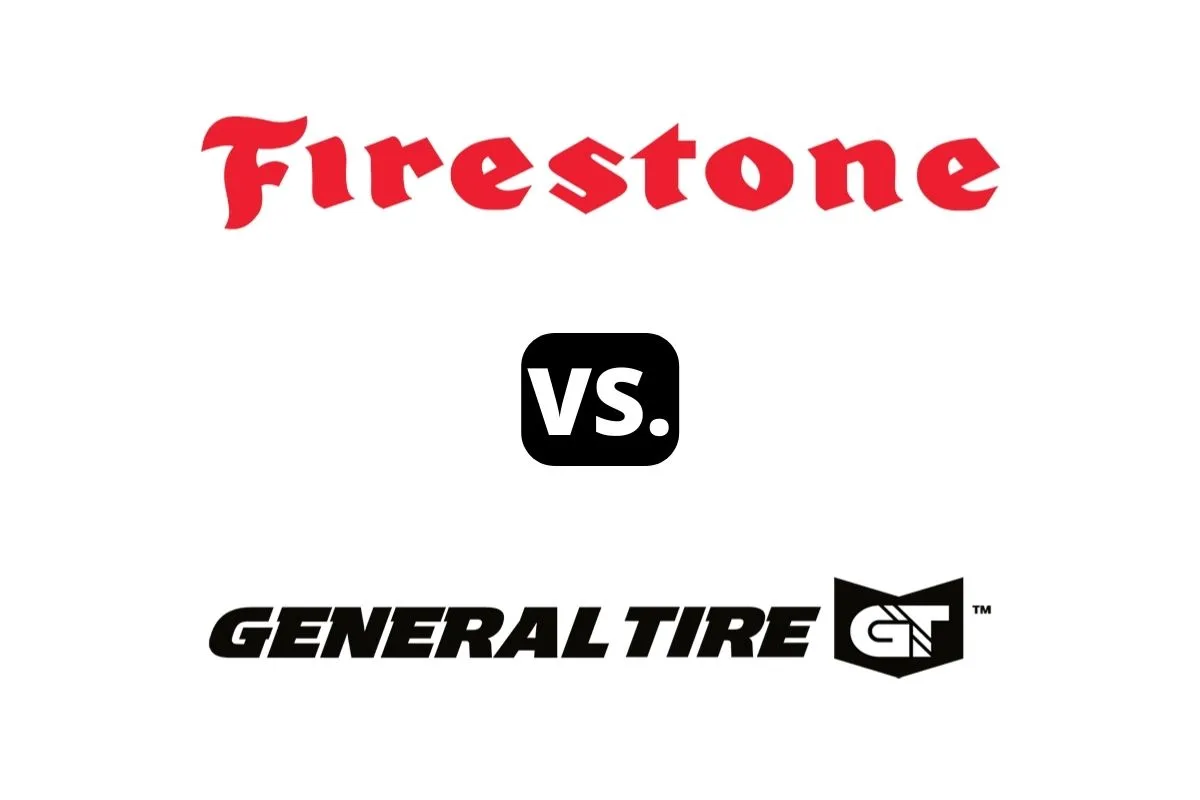
Firestone vs General – Comparison Table
| Firestone | General | |
| Country of Origin | United States | United States |
| Year Founded | 1900 | 1915 |
| Made In | United States, Vietnam, Brazil, Canada, and Costa Rica | Waco TX, Uvalde TX, Mayfield KY, Bryan OH, Charlotte NC, and Mt. Vernon IL in the US |
| Parent | Bridgestone Corporation (Japan) | Continental AG (Germany) |
About the Brands

1. Firestone
Firestone is an iconic American tire brand that traces its roots back to 1900 when it was founded in the United States.
The company quickly gained recognition for its high-quality tires, becoming a leading player in the industry.
Throughout its history, Firestone has been committed to innovation and performance.
In 1988, Firestone became a subsidiary of the Bridgestone Corporation, a Japanese multinational company.
This acquisition allowed Firestone to benefit from Bridgestone’s global reach and technological advancements.
Over the years, Firestone has continued to thrive under Bridgestone’s ownership, leveraging its expertise and resources to maintain its position as a trusted tire brand.
Today, Firestone offers a wide range of tires for various vehicles, including passenger cars, trucks, SUVs, and commercial vehicles.
With a rich heritage and a legacy of excellence, Firestone remains a prominent name in the tire industry.
Mostly Known for Manufacturing Tires For:
- Passenger cars
- Trucks
- SUVs (Sport Utility Vehicles)
- Vans
- Light trucks
- Medium trucks
- Buses
2. General
General Tire, founded in 1915 in the United States, has a rich history as a tire manufacturer.
Originally established as the “The General Tire & Rubber Company,” it quickly gained prominence in the automotive industry.
Over the years, the brand’s commitment to innovation and quality led to its expansion and solid reputation.
General Tire became recognized for producing high-performance tires for all types of vehicles, including passenger cars, trucks, and SUVs.
In 1987, the German company Continental AG acquired General Tire, further enhancing its global reach and technological advancements.
Today, General Tire continues to offer a wide range of reliable and durable tires, combining cutting-edge technology with a legacy of excellence.
With Continental AG as its parent company, General Tire remains a trusted and respected brand, providing drivers with safety, performance, and comfort on the road.
Mostly Known for Manufacturing Tires For:
- Passenger cars
- SUVs (Sport Utility Vehicles)
- Trucks
- Crossover vehicles
- Light trucks
- Commercial vans
- Off-road vehicles
- All-terrain vehicles (ATVs)
- Performance vehicles
Differences
1. Dry Performance
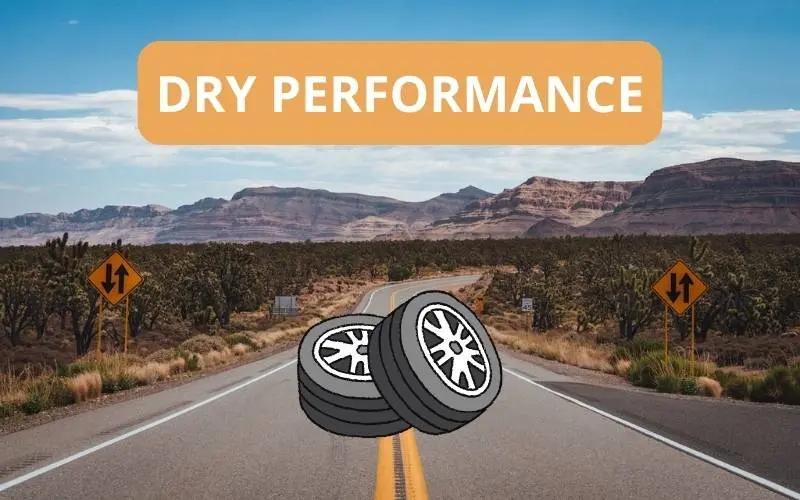
I’m going to compare the performance of two summer tires as they are the ideal type in dry weather.
I’m taking a look at the Firestone Firehawk Indy 500 vs the General G-MAX RS.
In my assessment, the Firestone Firehawk Indy 500 receives a dry performance rating of 4.5 out of 5.
It has been highly praised for its exceptional handling, responsive steering, strong grip and stability, and a comfortable ride.
The tire’s innovative tread compound and wide shoulder blocks contribute to its impressive dry performance capabilities.
On the other hand, the General G-MAX RS receives a slightly higher rating of 4.8 out of 5 for its dry performance.
It offers crisp handling, strong braking, excellent grip with Smart Grip Technology, and an ultra-high-performance design.
The tire’s focus on precise control, effective braking, enhanced traction, and an exhilarating driving experience showcases its strong dry performance capabilities.
Considering the minimal difference in ratings, both tires offer similar levels of dry performance.
Thus, I would declare a tie between the Firestone Firehawk Indy 500 and the General G-MAX RS in terms of dry performance.
2. Wet Performance
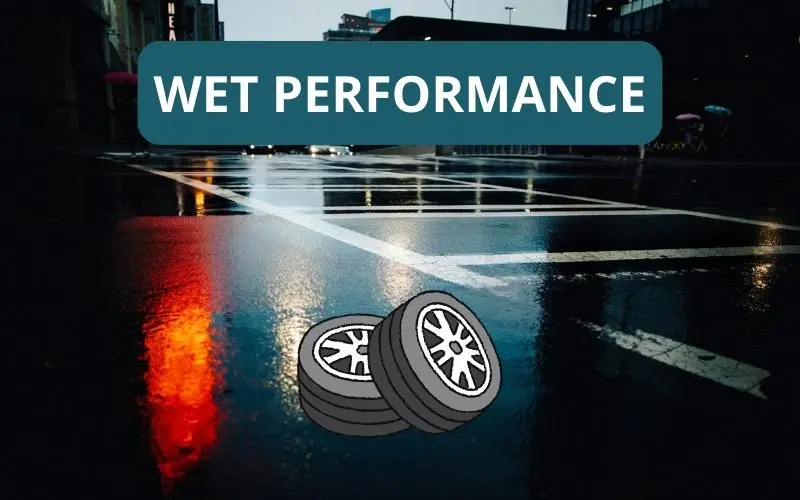
For the wet performance, I’ll be comparing the Firestone WeatherGrip vs the General AltiMAX RT43.
Based on my research and personal rating, I rate the Firestone WeatherGrip’s wet performance at 4.3 out of 5.
Its features like shorter braking distances and resistance to hydroplaning indicate good wet traction.
The all-season design supports reliable traction in various weather conditions.
Similarly, the General AltiMAX RT43 scores 4.4 out of 5 for wet performance.
It receives praise for providing consistent traction on wet roads and performing well in wet and dry conditions.
As both tires offer comparable levels of wet performance, it’s a tie between them.
3. Snow Performance
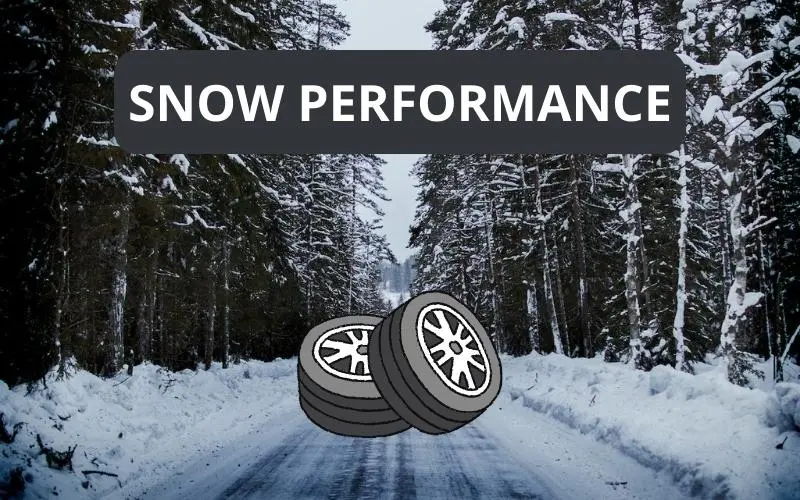
We all know that you need dedicated winter tires if you’re going to be driving on harsh winter conditions.
That’s why I’ll be comparing the snow performance of two specialized winter tires – Firestone Winterforce 2 vs General AltiMAX Arctic.
In my evaluation, I personally rate the Firestone Winterforce 2 tire’s snow performance at 4.5 out of 5.
It displays reliability in snowy conditions through its cold weather compound, maintaining flexibility and grip in low temperatures.
The open shoulder slots and sipes on the tread enhance traction on snow.
Its 3-Peak Mountain Snowflake certification assures dependable traction.
Similarly, the General AltiMAX Arctic tire scores 4.6 out of 5 for its commendable snow performance.
It is a studdable winter tire with an innovative compound and tread pattern, offering excellent grip on snow and ice.
Reviews confirm its capabilities on various surfaces.
As both tires offer similar levels of snow performance, it’s a tie.
4. Mileage Warranty and Tread Life

| Firestone | General | |
| Treadwear Warranty | up to 55,000 miles tread life warranty | up to 65,000 miles tread life warranty |
| Average Tread Life | Firestone tires are expected to last anywhere between 40,000 to 60,000 miles on average. | General tires have an average lifespan of around 30,000 to 75,000 miles. |
Based on my research, Firestone tires come with a treadwear warranty of up to 55,000 miles, while General tires offer a slightly higher treadwear warranty of up to 65,000 miles.
In terms of average lifespan, Firestone tires typically last between 40,000 to 60,000 miles, while General tires have an average lifespan ranging from 30,000 to 75,000 miles.
Therefore, General tires generally offer a longer treadwear warranty and a wider range of average lifespan compared to Firestone tires.
5. Prices

In this section, I’ll be taking a look at the price ranges of both tire brands – Firestone vs General.
I’ll be using one of the biggest tire and wheel retailers in the US for this comparison – Discount Tire.
Here is a comprehensive table that showcases each brand has to offer:
| Firestone | General | |
| Average Price Range (Discount Tire) | $82 to $603 /ea | $71 to $595 /ea |
| Cheapest Tire (Discount Tire) | FT140 goes from $82 – $170 /ea | Altimax RT43 goes from $71 – $187 /ea |
| Most Expensive Tire (Discount Tire) | Destination M/T 2 goes from $229 – $603 /ea | Grabber X3 goes from $238 – $595 /ea |
6. Pros and Cons
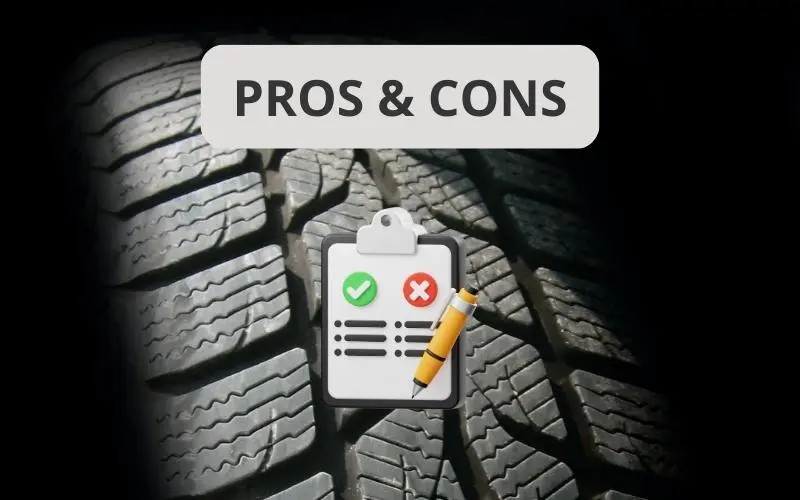
Firestone
| Pros | Cons |
| ✔ Firestone tires have good performance | ❌ Their shop is very expensive and they might try and sell you unnecessary services/things |
| ✔ Wide availability | |
| ✔ Good option for those who live in areas with harsh winter conditions |
General
| Pros | Cons |
| ✔ Excellent price performance ratio, providing good value for their price | ❌ General tires are generally considered to be in the mid-range segment |
| ✔ Wide range of tire options for different types of vehicles | |
| ✔ Availability |
7. Popular Tires

Here are some notable tires from Firestone:
- Destination LE3
- Firehawk Indy 500
- WeatherGrip
Some of General’s best tires are shown below:
- Grabber A/T X
- Altimax RT43
- Grabber HTS60
Which Is the Better Brand Overall?

After considering the various factors, it’s clear that both Firestone and General offer competitive tire options.
In terms of dry performance, both the Firestone Firehawk Indy 500 and the General G-MAX RS receive high ratings, making it a tie.
Similarly, for wet performance and snow performance, the Firestone WeatherGrip and General AltiMAX RT43, as well as the Firestone Winterforce 2 and General AltiMAX Arctic, respectively, offer comparable levels of performance.
However, General tires offer a longer treadwear warranty and a wider range of average lifespan.
Therefore, I declare General as the better pick overall.